Looking for that Authentic Under the Tuscan Sun Experience? Here are Five Must See “off the Beaten Trail” Towns in Tuscany.
When most people think of Tuscany, they think of rolling hillsides, warm sunsets over rolling hillsides covered in vineyards, and of course wine. But inevitably, when most people end up traveling to Tuscany, they get funneled into the tourist trap that is Florence, without really getting to see the real sights of Tuscany. For anyone considering traveling to Tuscany who wants to leave the busy streets of Florence, these are my personal picks for top five “must see” towns and villages to visit in Tuscany:
Cortona
The walls of Cortona have been dated back to at least the 9th century B.C, making it a very old center of the Etruscan civilization, a pre roman tribe that lived in the area now called Tuscany. According to Italian mythology, Cortona was discovered by Noah, who lived in the area for 30 years because it was so fertile and beautiful. Cortona is situated on the side of a mountain, and only one street in the entire city, the Via Nazionale, is flat. The streets are filled with beautiful medieval and renaissance era churches and monasteries, and if you are feeling adventurous, you can climb to the top of the town to visit a Florentine castle that boasts a view of the town and the valley below. Any history lovers should be sure to visit the nearby Lake Trasimene, the site of Hannibal’s famous battle against the Roman Army and the largest ambush in military history.
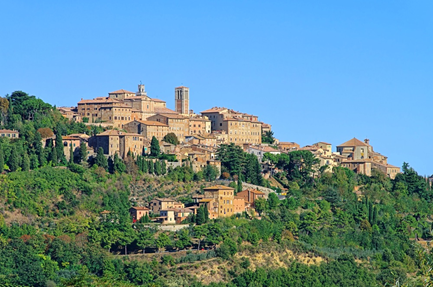
Siena
If you are looking for a place that has all the convenience of a larger city like Florence, but without all the annoying tourists and tacky souvenir stores, Siena is the place for you. Only an hour by train from Florence, Siena is easy to get to, even for inexperienced travelers. The central district of Siena has been declared a UNESCO World Heritage Site, and is full of beautiful medieval churches, quaint narrow streets, and it even still has its original Roman walls! Be sure to plan your visit on either July 2nd, or August 16th, when the annual palio is held, a giant horserace where the competitors run through the central historic plaza and the whole town bets on their neighborhood’s horse!
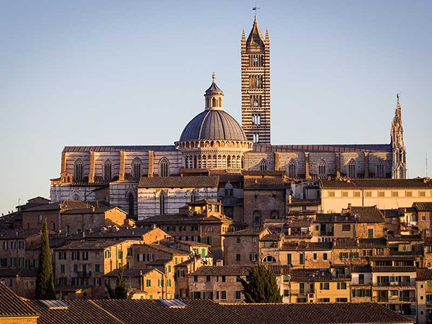
Monteriggioni
Featured in Dante Alighieri’s Inferno, Monteriggioni is a tiny walled town on a hill. Built in the 1200’s by Siena in their near constant wars against Florence, Monteriggioni was never captured in battle, and was only captured when a villager handed the keys to the city over to the Florentines. While here be sure to climb up the towers for an amazing view of the surrounding chianti countryside.
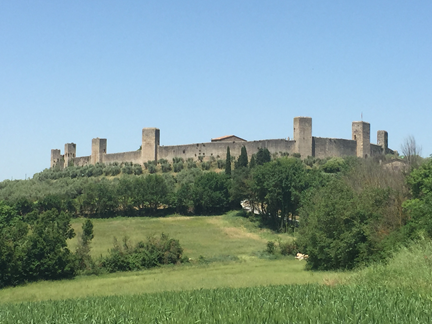
San Gimignano
San Gimignano has been called the “Medieval New York,” as it is famous for it’s skyline featuring 12 tall towers. Once filled with dozens of towers, many of them were either torn down or fell over during the last few hundred years. San Gimignano is one of the best preserved medieval Tuscan towns because during the 1300’s a round of plague hit, killing off most of the population, and throwing the town into extreme poverty. It is only because of this terribly sad bit of luck that the town has survived as long as it has so unchanged, for none of the residents had enough money to ever build new buildings and the entire town looks almost exactly as it did over 700 years ago. While there be sure to sample a bit of the famous local wine, vernaccia, which is said to be the favorite wine of the pope.
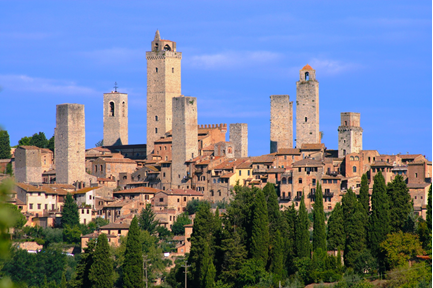
Pienza
Pienza was the birthplace of Pope Pius II, who had the entire town demolished and rebuilt in the 1450’s as the ideal renaissance town, and was the first example of modern urban planning. The main piazza is bordered by four stunning examples of renaissance architecture, and the surrounding streets all have huge elaborate palazzos built by the wealthy cardinals of Rome who used Pienza as a summer vacation town to escape the dirty and bustling city of Rome. In the 1990’s the city was declared a UNESCO World Heritage Site, and then in 2006 the entire valley was declared a World Heritage Site for its beauty.
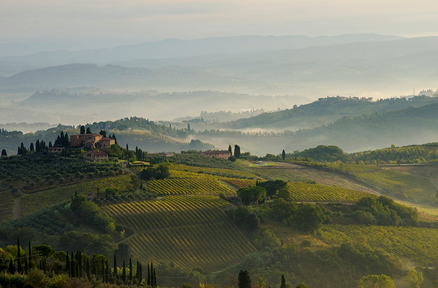
Written by: Joe Biggie, Global Exchange Intern
Greater Cincinnati World Affairs Council does not own or claim to own these photos.


